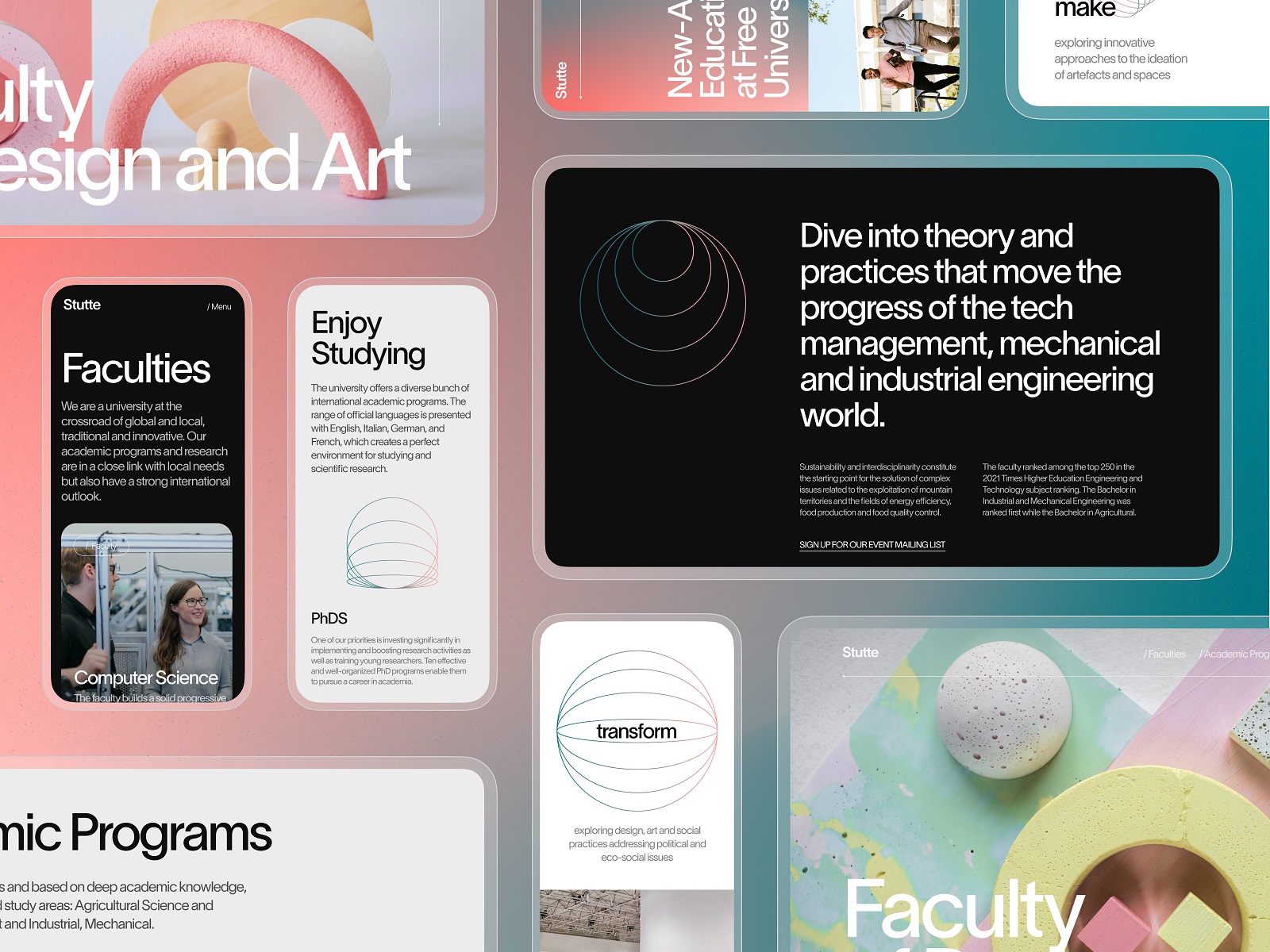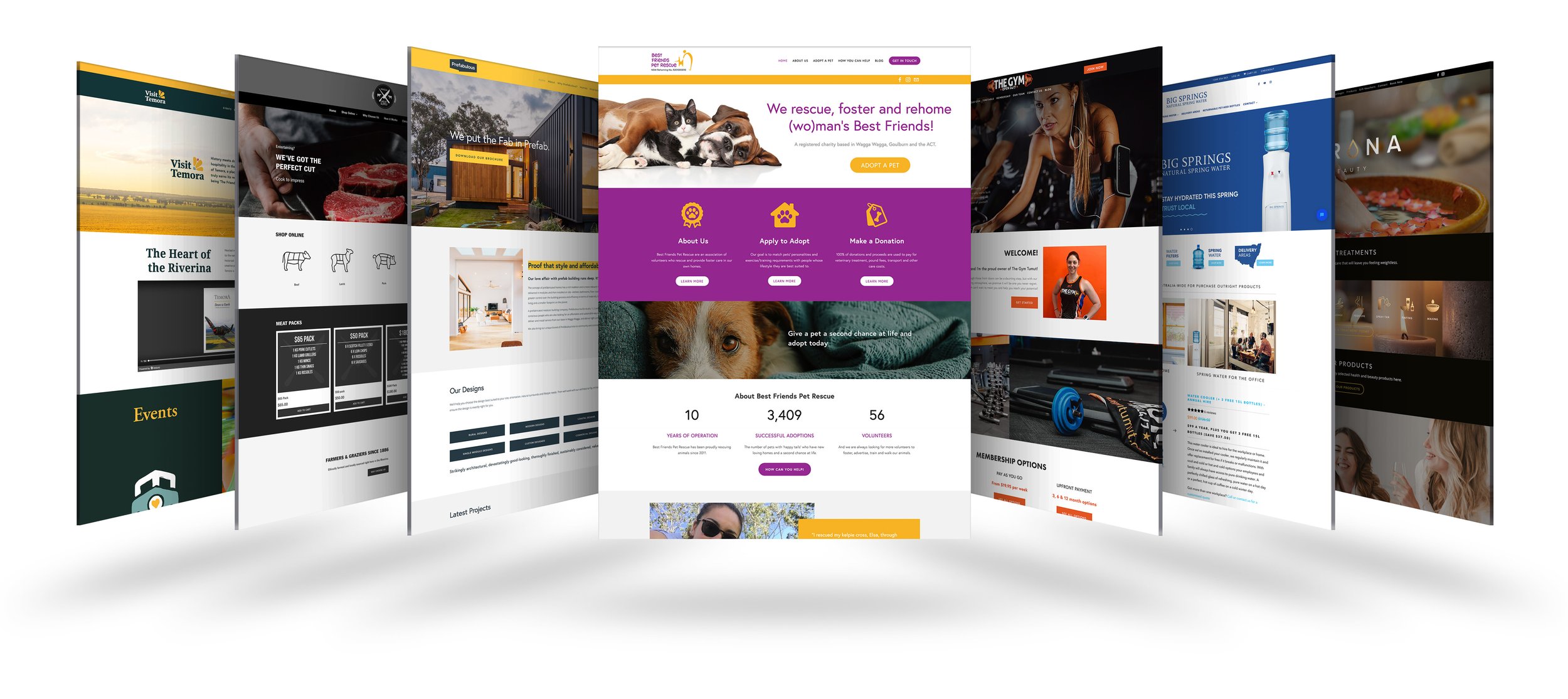How Website Design Can Improve Conversion Rates and Sales
How Website Design Can Improve Conversion Rates and Sales
Blog Article
The Ultimate Overview to Modern Internet Site Design Trends
In the ever-evolving electronic landscape, modern-day website style fads play an important role fit user experience and interaction. From the rise of minimal layout principles that prioritize simplicity to the impact of vibrant typography in specifying brand identification, each element adds to a cohesive online visibility. The focus on mobile-first and receptive techniques, along with cutting-edge microinteractions, additionally improves use. Additionally, the growing concentrate on sustainable internet design techniques mirrors a dedication to environmental responsibility. These fads collectively raise crucial questions concerning the future of effective website design and what it suggests for services and consumers alike.
Minimalist Design Concepts
Minimal style principles highlight the idea that less is extra, advocating for simplicity and capability in aesthetic communication. This technique strips away unneeded components, concentrating instead on important components that convey the designated message successfully. By focusing on quality, minimalist style enhances customer experience, permitting visitors to navigate internet sites effortlessly.
Core tenets of minimalist style consist of using sufficient white room, which creates a feeling of equilibrium and organization. This negative room not just guides the audience's focus to vital aspects but also fosters a relaxing visual ambience. Furthermore, a limited shade scheme is commonly employed, utilizing monochromatic schemes or soft colors to keep aesthetic cohesion and prevent overwhelming the user.
Typography plays an important function in minimalist design, where understandable font styles are picked for their simplicity and efficiency in interacting web content. Ultimately, minimal layout concepts cultivate a focused environment that encourages customers to involve with the web content, enhancing the total efficiency of contemporary site design.
Strong Typography Selections
Embracing bold typography selections has actually become a defining attribute of modern site style, as it efficiently captures attention and communicates solid messaging. Developers are progressively utilizing typography not just as a useful element but as a crucial aesthetic component that enhances the total visual and individual experience.

In addition, the juxtaposition of vibrant typography with minimal design concepts allows for striking contrasts, boosting readability while preserving visual allure. The use of whitespace around strong text even more emphasizes its importance, making certain that the message resonates with the audience.
As electronic landscapes come to be a lot more competitive, leveraging vibrant typography makes it possible for brand names to separate themselves and leave a long lasting impression. The cautious selection of typefaces and their application can evoke emotions, develop tone, and drive action, making bold typography an important tool in modern-day internet site style. Eventually, it is a powerful means to boost storytelling and make sure that crucial messages are not just seen but also really felt.
Responsive and Mobile-first Style
Mobile-first and responsive style has arised as a critical concept in modern website advancement, mirroring the enhancing reliance on mobile phones for accessing online content. As customer actions shifts towards mobile browsing, developers must focus on producing experiences that adjust flawlessly across numerous screen dimensions and resolutions.
A receptive style ensures that a web site instantly changes its design, images, and functionality based on the tool being used. This strategy improves individual experience by providing consistent navigation and readability, regardless of whether the site visitor gets on a desktop computer, smart device, or tablet computer computer. Mobile-first style supporters for creating web sites initially for Visit This Link smaller screens, subsequently scaling up to larger display screens. This method urges an extra streamlined and efficient style process, concentrating on necessary web content and performance initially.
Implementing responsive and mobile-first concepts not just provides to customer choices however additionally aligns with search engine optimization (SEO) methods. Major internet search engine, like Google, prioritize mobile-friendly web sites in their rankings, making it important for companies to take on these layout methods. In an affordable digital landscape, welcoming receptive and mobile-first style is not simply a choice; it is necessary for making sure ease of access and interaction with a diverse target market.
Involving Microinteractions
Microinteractions play a critical role in boosting individual interaction and total website experience, particularly in the context of mobile-first and responsive style. These subtle design aspects supply immediate responses to individuals, making interactions extra enjoyable and instinctive. Instances consist of button animations, alert signals, and loading indications, which not just guide users but additionally produce a sense of link with the user interface.
Incorporating engaging microinteractions can significantly boost use by minimizing cognitive tons. When individuals get acoustic or visual feedback upon executing activities, such as clicking a button or sending a form, they feel much more positive in their choices. This cultivates a smoother navigating experience, inevitably increasing individual retention.

As web site layout trends proceed to develop, the value of microinteractions can not be overstated. They act great site as the subtle yet powerful touchpoints that change regular interactions into extraordinary experiences, thereby elevating the overall performance of modern-day website design.
Sustainable Website Design Practices
Lasting web style practices are ending up being increasingly important as the electronic landscape grows and environmental problems climb. Developers and programmers are acknowledging their obligation to produce web sites that not just serve individual needs however additionally lessen environmental effect. This strategy encompasses a number of essential methods.
Firstly, optimizing energy usage is critical. Sites ought to be designed to fill rapidly and efficiently, which reduces server energy usage and improves customer experience. Methods such as image compression, lessening HTTP requests, and using modern coding methods add significantly to this objective.
Second of all, choosing green organizing companies is crucial - website design. Numerous organizing companies are currently powered by sustainable power sources, making it possible for internet sites to run in a much more sustainable manner. This choice mirrors a dedication to lowering carbon footprints
In addition, embracing a minimal style can improve sustainability. Less components on a page result in less information transfer, which not only accelerates loading times yet read the full info here also conserves resources.
Lastly, advertising electronic availability ensures that websites reach a larger audience without unnecessary bloat, straightening individual experience with environmental obligation. By integrating these sustainable practices, internet designers can add positively to both user engagement and the earth's health.
Verdict
In recap, modern internet site design patterns highlight the assimilation of minimal concepts, strong typography, and responsive design to enhance customer experience. Engaging microinteractions add to remarkable interactions, while lasting methods support for ecologically aware development. Collectively, these components not only raise visual allure however also improve capability, making sure that internet sites are both user-friendly and aesthetically striking. Embracing these fads is vital for creating impactful digital experiences that resonate with customers in a progressively competitive on the internet landscape.
In the ever-evolving electronic landscape, modern internet site design patterns play a crucial function in shaping individual experience and engagement. By focusing on clarity, minimalist style improves user experience, enabling site visitors to navigate web sites easily.
Ultimately, minimal design principles grow a concentrated atmosphere that motivates customers to involve with the material, boosting the overall effectiveness of modern site design.Microinteractions play a pivotal duty in boosting individual engagement and total site experience, especially in the context of mobile-first and responsive layout.In summary, modern website style patterns stress the assimilation of minimal principles, vibrant typography, and receptive style to enhance user experience.
Report this page